Birds, Forests, and the Heart of Conservation
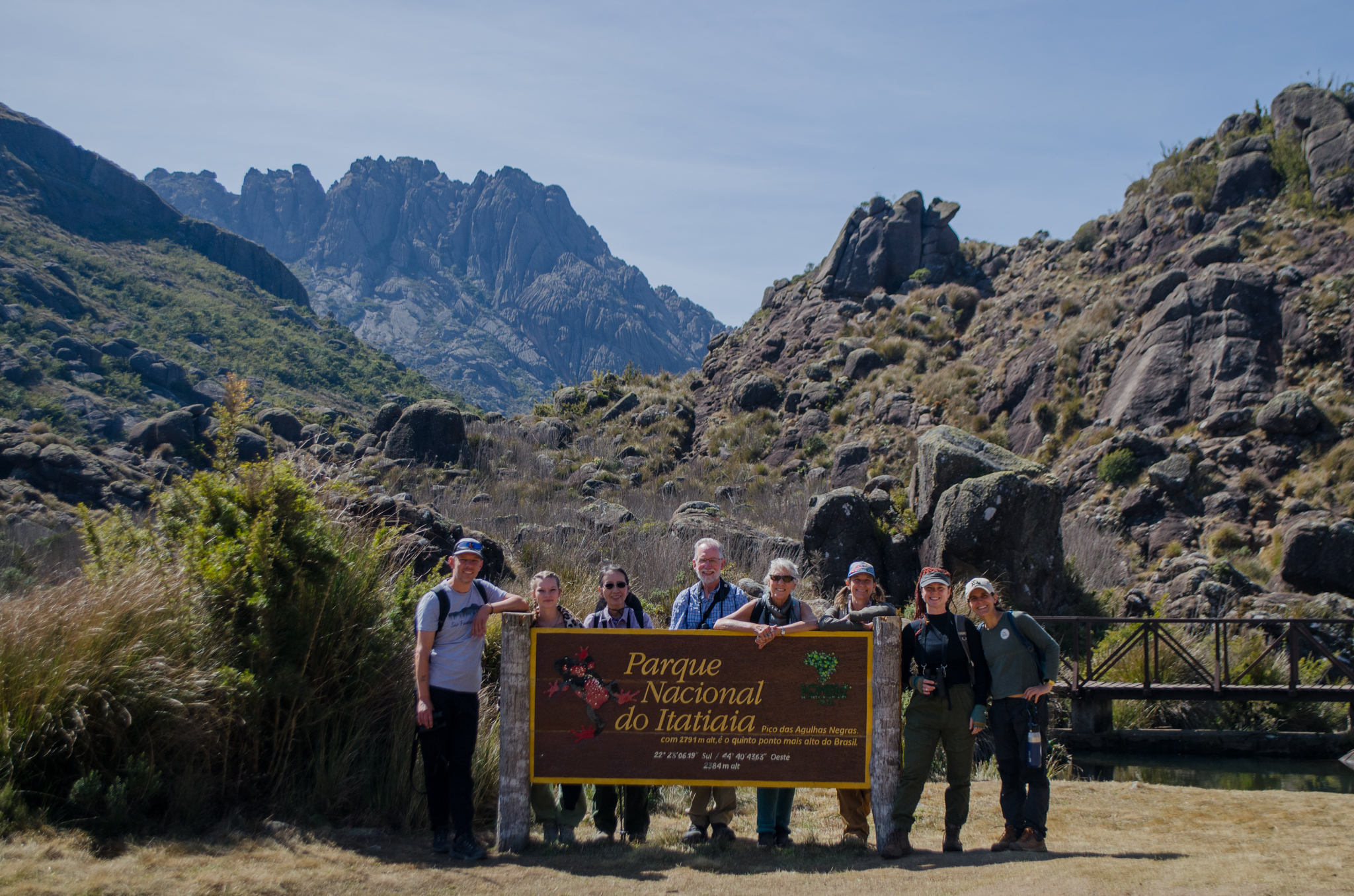
Three years ago, KBO launched a travel program. Our small-group, conservation-focused journeys are led by expert guides and designed to inspire, educate, and directly support our mission. I have just returned from co-leading a 10-day trip with my colleagues at the Mantiqueira Bird Observatory in the Atlantic Forest of Brazil. The trip itinerary blends birding and nature exploration with cultural experiences, as well as opportunities to observe scientific research and conservation in the field. This trip helps raise funds for the intern exchange program between our two bird observatories, allowing us to advance science while training the next generation of field biologists. To learn more about future opportunities to travel with us, visit klamathbird.org/birding-trips/. – Jaime Stephens
KBO Board President Shannon Rio joined me on the trip. Here is a personal reflection from her time in Brazil.
“We are in Brazil for 10 days on a fundraising trip for the Mantiqueira Bird Observatory (OAMa), and there is one evening where we are exploring our definition of conservation.
Dani, a scientist and a Master’s degree student, tells us that her purpose in life is to save the world. She has just been to a workshop led by Al Gore on climate change, and before the conference, she had little hope for our planet. But now, she sees a future, and it is positive. At the end of the evening, I have finally understood my definition of conservation. It means the caring for and protection of ALL forms of life: birds, people, plants, insects, etc. It means doing the work that is in your heart to make the world a better place. For Ruthie, my 17-year-old granddaughter, who is also on our trip, it is working with small children so that their formative years are healthy. For Tomoe, a 70-year-old woman on our trip, it is providing a healthy future for people on this planet. For me, it’s about protecting birds and habitats, as well as reducing hunger in our Rogue Valley.So, our journey through Brazil is about this: hiking the land, eating the food, being with the local people, watching the scientific work of banding birds in the field, swimming in cold pools under waterfalls, and BEING IN each moment.
Our guides are Sami, Luiza, and Jaime, whom I affectionately call our ‘flock mothers’ because they keep us safe, read our desires and requests, and incorporate them into their itinerary.
We stayed in 4 lodges, mostly remote. These are simple accommodations that serve us local healthy foods. Picking a favorite part of each day was challenging for me because we experienced so much and also had time to rest and absorb it. For example, we hiked through the jungle in search of monkeys and saw a baby TITI monkey on its mother’s back. Paul was our curiosity seeker, taking photos and identifying the plants, fungi, and fauna on our forays into the jungle, into the rocky areas of the National Park, and also in villages.
We had the good fortune to be at the aviary in the jungle that held the endangered Black-fronted Piping-Guans. It was on that one day that GPS backpacks were being secured onto their backs to track their routes and habitat locations in the effort to find out the information that might result in preventing their extinction.
Later that day, we heard a presentation by a conservation organization dedicated to protecting several endangered species in Brazil. It is difficult to put into words the dedication, hard work, and hope that are poured into this endeavor. For me, being informed and inspired makes this a worthy journey into the Atlantic Forest of Brazil.
Sami, one of our guides, celebrated her 34th birthday on this trip, and we wrote her haikus as our gift, along with cake and singing, and, as is the Brazilian tradition, enthusiastic clapping of hands.Luiza, who founded OAMa along with her life partner, Pedro, is a born leader. She combines her brilliant ideas with hard work. Please visit their website to learn more, and I encourage you to consider making a donation.
Jaime Stephens is KBO’s Director of Conservation. She shared a project she worked on with Luiza and Pedro during their time at KBO, tagging Common Nighthawks to help discover their migratory route. The nighthawk does not know boundaries and considers their breeding grounds throughout the US and Canada to be a shared home with their wintering grounds in Brazil.
Another aspect of this trip is the sharing of it with my 43-year-old son, Jeremy. Because he is busy being a teacher, has 4 children, and lives in Illinois, it was both rare and special to have 10 days on a mother-son (and granddaughter) trip. Like many who come on this tour with OAMa and KBO, Jeremy expressed how life-changing it was to travel in a small group with local Brazilians who are inspirational in their desire to, as Dani put it, save the world.
This yearly endeavor raises money for the conservation scientists at OAMa. Exposure to the people, the culture, and the food, along with supporting efforts to protect birds and habitats, makes this my favorite kind of travel. When else can you take a vacation with someone like Dani, who gives a high five and says, “Let’s save the world together!””
Whether you’re drawn to the thrill of birding in remote forests, the joy of cultural exchange, or the hope sparked by grassroots conservation, these journeys offer something rare: connection—with nature, with people, and with purpose. As we reflect on the unforgettable moments shared in Brazil, we invite you to join us on our next adventure, support our intern exchange program, or make a donation to help protect birds and habitats across the Western Hemisphere. Together, we can keep saving the world, one step, one story, one bird at a time.
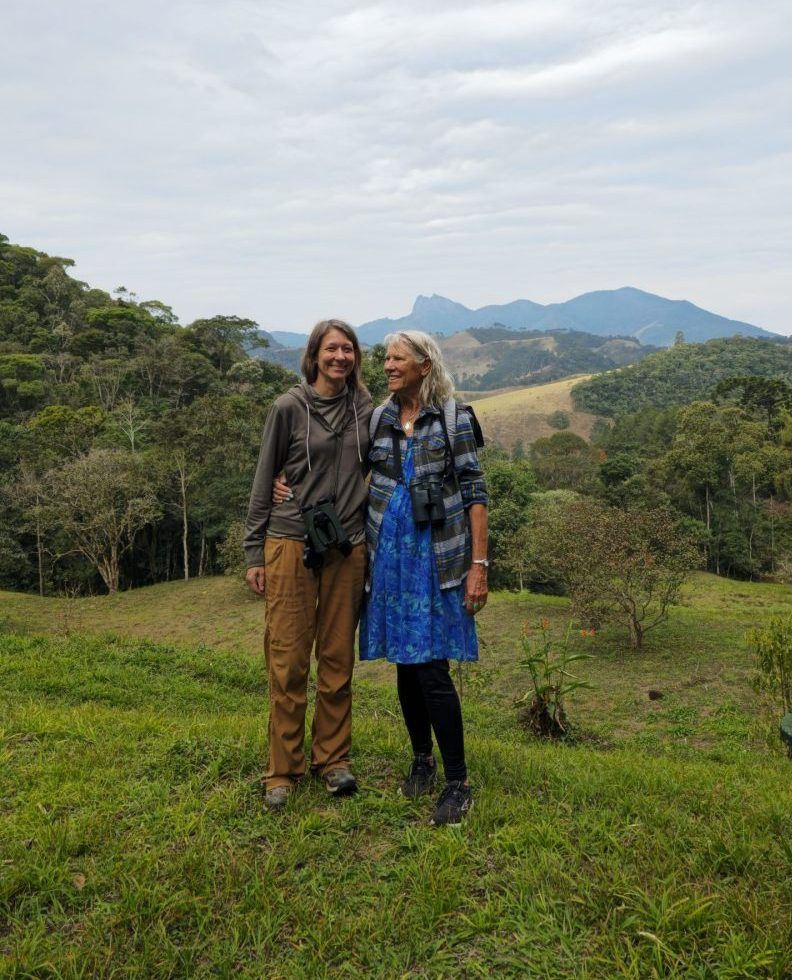
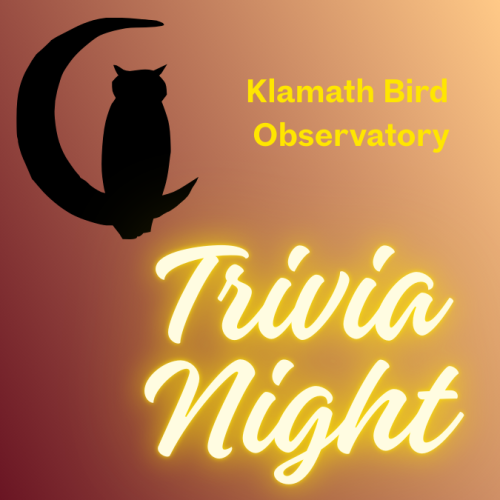
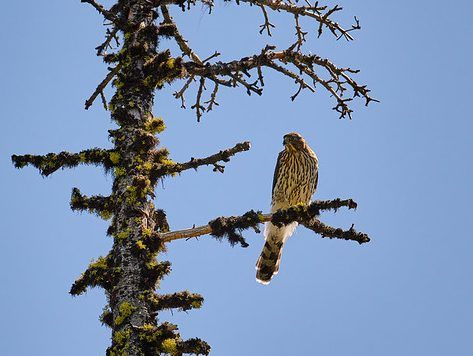

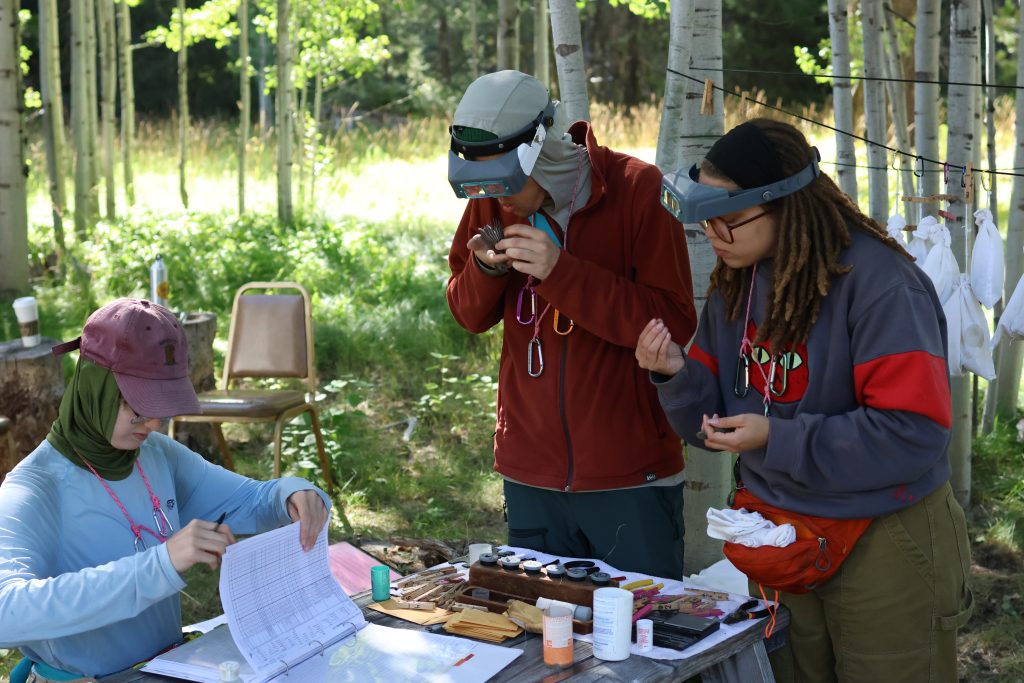
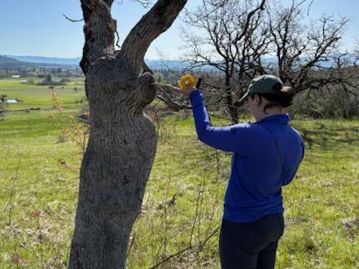
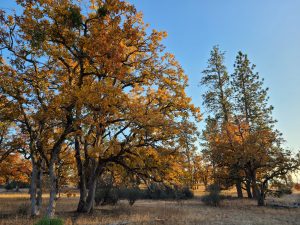 Klamath Bird Observatory and Cal Poly Humboldt Applied Avian Ecology Lab have partnered up to study the response of oak-obligate breeding birds to oak restoration efforts in the Rogue Valley of Oregon, and to understand what drives local population trends. We have selected three species that require oak habitat, Oak Titmouse, White-breasted Nuthatch (Slender-billed subspecies), and Ash-throated Flycatcher, to study in the California black oak and Oregon white oak woodlands at
Klamath Bird Observatory and Cal Poly Humboldt Applied Avian Ecology Lab have partnered up to study the response of oak-obligate breeding birds to oak restoration efforts in the Rogue Valley of Oregon, and to understand what drives local population trends. We have selected three species that require oak habitat, Oak Titmouse, White-breasted Nuthatch (Slender-billed subspecies), and Ash-throated Flycatcher, to study in the California black oak and Oregon white oak woodlands at 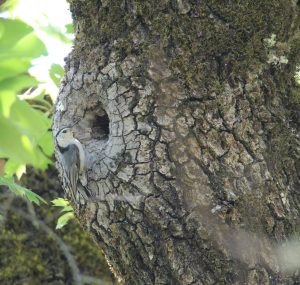
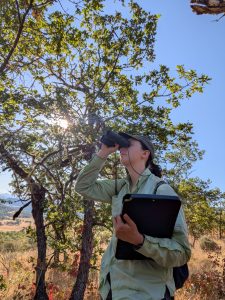
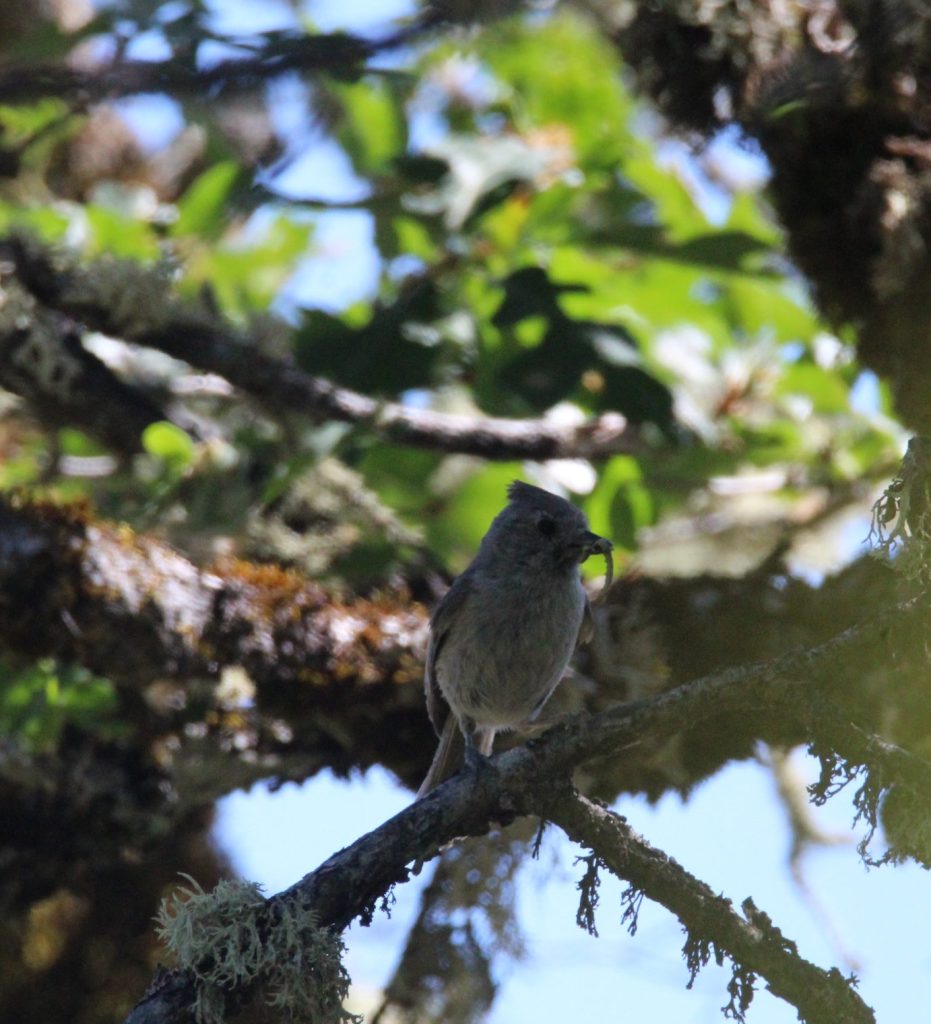
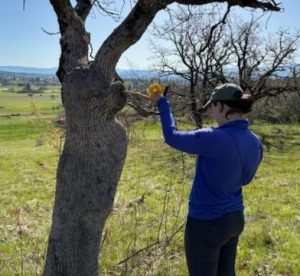
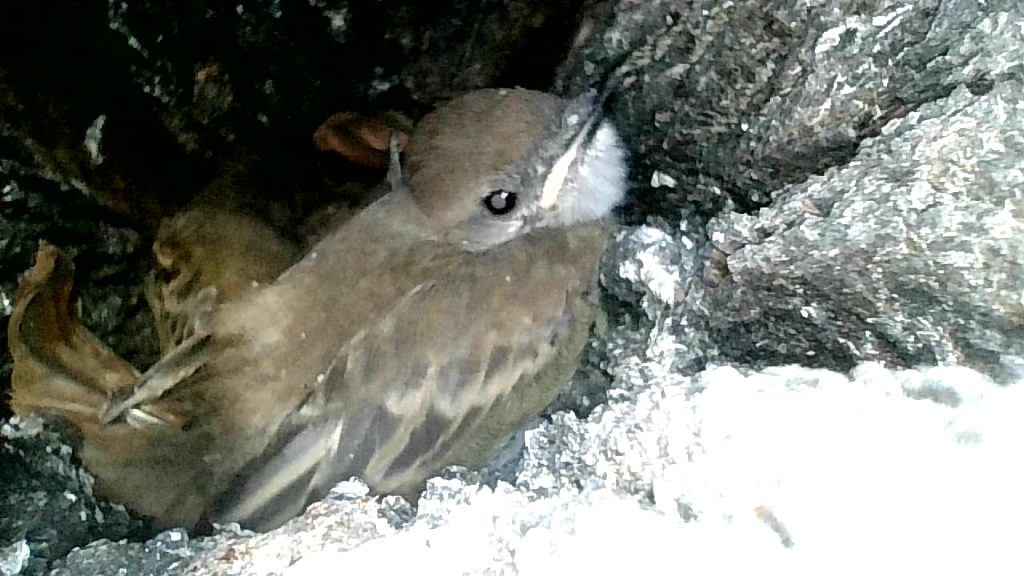
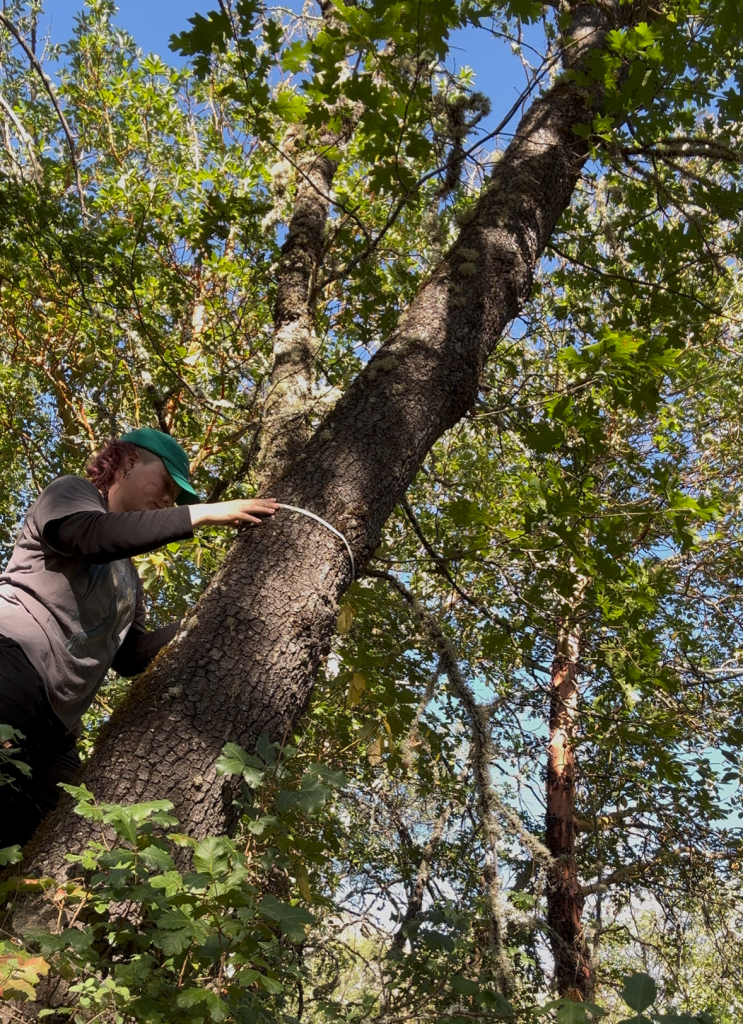
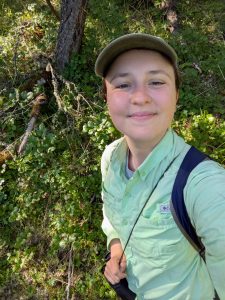
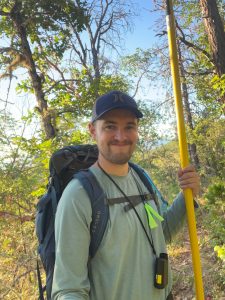
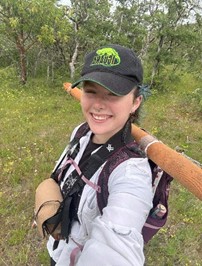
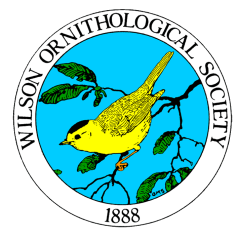
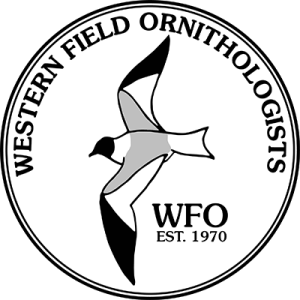

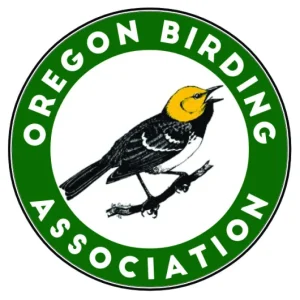
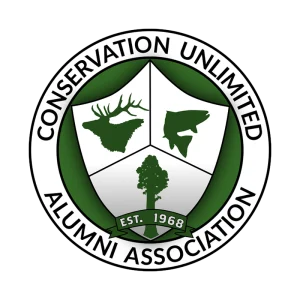
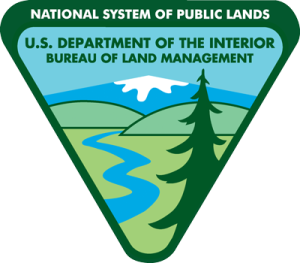




 The
The 


 The report underscores the crisis facing oak- and prairie-dependent bird species. Western forest birds have declined by 11%, grassland birds by 43%, and oak-woodland specialists like the Lewis’s Woodpecker and Oregon Vesper Sparrow are among those identified as “Tipping Point” species, having lost more than half their populations over the past 50 years.
The report underscores the crisis facing oak- and prairie-dependent bird species. Western forest birds have declined by 11%, grassland birds by 43%, and oak-woodland specialists like the Lewis’s Woodpecker and Oregon Vesper Sparrow are among those identified as “Tipping Point” species, having lost more than half their populations over the past 50 years.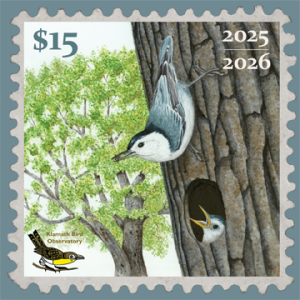
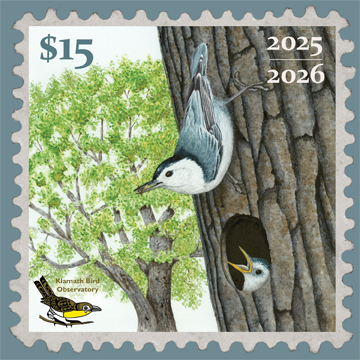
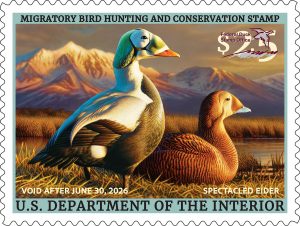 By funding habitat protection across our National Wildlife Refuges, the Federal Duck Stamp has long shown what’s possible when people unite for wildlife. At Klamath Bird Observatory, we’re building on that legacy with our Conservation Science Stamp that highlights science-based efforts to protect habitats for all bird species. When you
By funding habitat protection across our National Wildlife Refuges, the Federal Duck Stamp has long shown what’s possible when people unite for wildlife. At Klamath Bird Observatory, we’re building on that legacy with our Conservation Science Stamp that highlights science-based efforts to protect habitats for all bird species. When you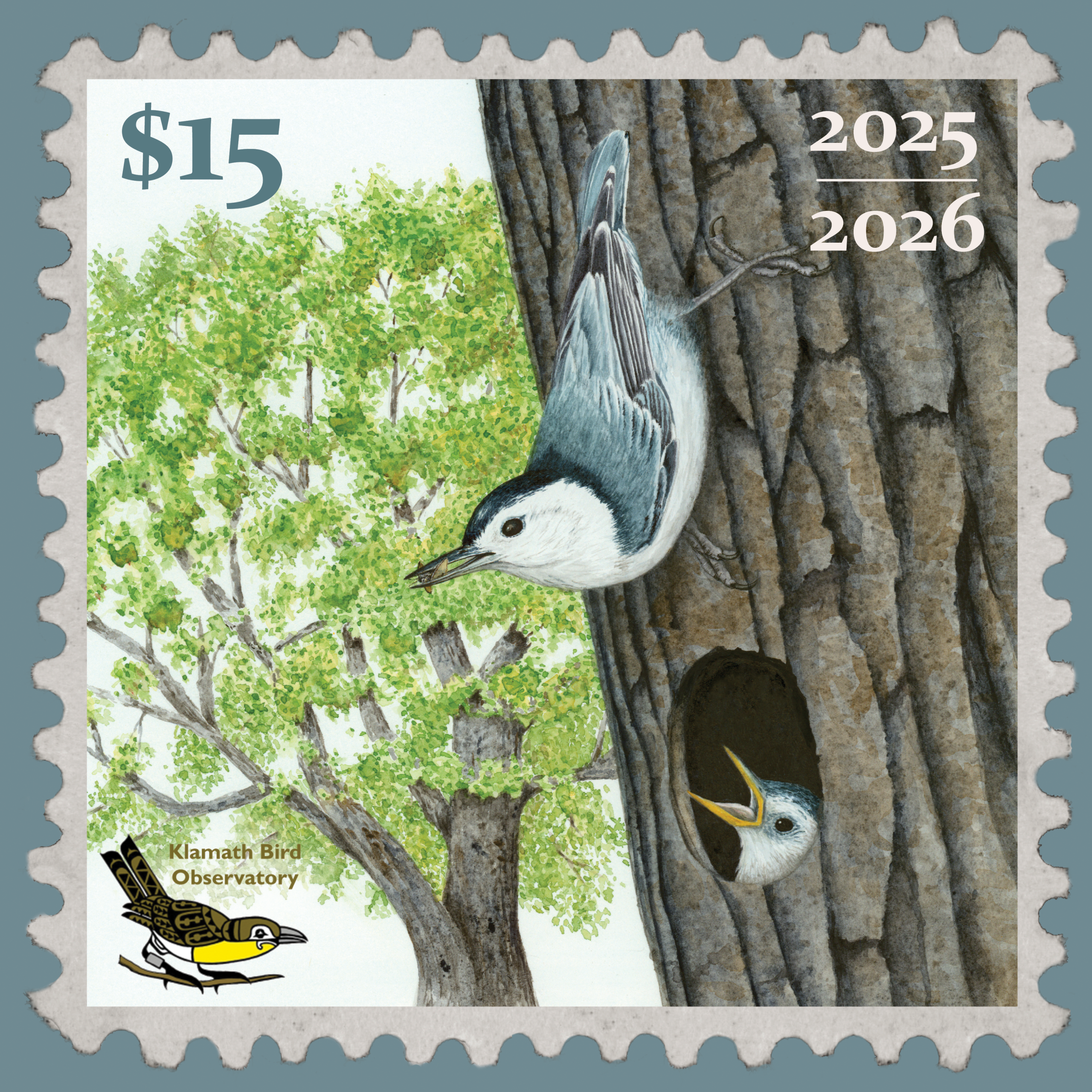 The White-breasted Nuthatch (Sitta carolinensis) is a small, bluish-gray-backed songbird noted for its pure white underparts, black cap, and habit of creeping head-first down tree trunks. Both males and females share similar plumage, and they are often heard giving nasal churring calls as they forage. These birds probe bark crevices for insects and spiders and cache seeds—especially sunflower kernels and other nuts—wedged into bark fissures before hammering them open.
The White-breasted Nuthatch (Sitta carolinensis) is a small, bluish-gray-backed songbird noted for its pure white underparts, black cap, and habit of creeping head-first down tree trunks. Both males and females share similar plumage, and they are often heard giving nasal churring calls as they forage. These birds probe bark crevices for insects and spiders and cache seeds—especially sunflower kernels and other nuts—wedged into bark fissures before hammering them open.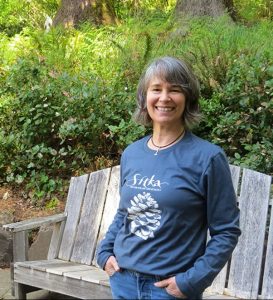 Nora Sherwood entered the field of science illustration as a midlife career changer, having spent many years in the high-tech world. She graduated from the University of Washington’s Natural Science Illustration certificate program in the Spring of 2014 and is a full-time, self-employed artist.
Nora Sherwood entered the field of science illustration as a midlife career changer, having spent many years in the high-tech world. She graduated from the University of Washington’s Natural Science Illustration certificate program in the Spring of 2014 and is a full-time, self-employed artist.